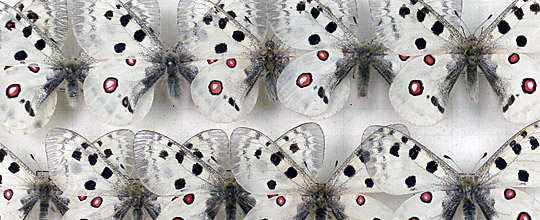Fossil bull
Goethe spent over 40 years studying fossils, or “petrifacts”, as he called them. On June 1, 1821, the Grand Duke Karl August sent him the skeleton of a bullock that had been found in a peat bog near Haßleben (Thuringia). Goethe considered this skeleton to be most significant. An article by Georg Friedrich Jäger about similar finds in Stuttgart which he received around the same time inspired Goethe to write a comparative essay. Goethe, who was also the head of Jena’s zoological collections, sent the skeleton to Jena, and on July 18, 1821 wrote to Johann Michael Färber (the museum scribe):
»Because the prince is expecting, on his arrival, to find the bull skeleton - discovered in the peat bog near Haßleben and transported to Jena - mounted, the museum scribe Färber and Dr. Klemm are ordered to set to work immediately, proceeding as follows: the former must commission and initiate the necessary carpentry and metalwork, the latter should start carving the missing pieces without delay, using the corresponding piece [of the skeleton], if it exists; or by analogy with our domesticated animals if both are missing.«
The amendments made at Goethe’s request are still visible on the tarsal and carpus of the skeleton.
Goethe was very excited by the “unearthing of the skeleton” (25 July 1821), and his son J.A. Goethe delighted to report that “His Royal Majesty was very pleased with the skeleton installation and with the Museum of Osteology” (6 September 1821). In July 1821, Goethe initiated another search of the Haßleben peat bog, where he discovered “almost the complete remainder of the bull”, which was duly brought to Jena. For his essay, Goethe obtained the skull of a Hungarian bull to compare with the fossil creature, and also examined a fossil skull from the Vogtland that had recently been described by F.H.W. Körte. For research purposes, he bought an “Ochsenhörnerzügelmaschine”, a machine which could manipulate the direction of growth of bulls’ horns. The essay “Fossil Bull” was written at the end of April 1822.
Various
documents bear witness to the interest and curiosity which the Haßleben
find sparked in Goethe. His essay, published 40 years ahead of Darwin’s
Origin of Species, touches for the first time on the idea that
cattle ‘evolved’ over the domestication process. Farmers, placing
emphasis on both usefulness and appearance, wanted their animals to
have regular, elegant horns, which is where the greatest difference
lies between the ancestral bull and today’s cattle races. Man’s
refinement of nature attested to the notion of ‘higher’ development.
“If the former shows us that by a process of serious, wild
concentration nature turned the horns of the ancestral bull in upon
themselves, thus, in a certain sense, robbing it of the weapon it would
have been so dependent on in its natural state, we also see that in
domesticated bulls, those same horns are pushed into a totally
different direction, growing upwards and outwards with great elegance”.



